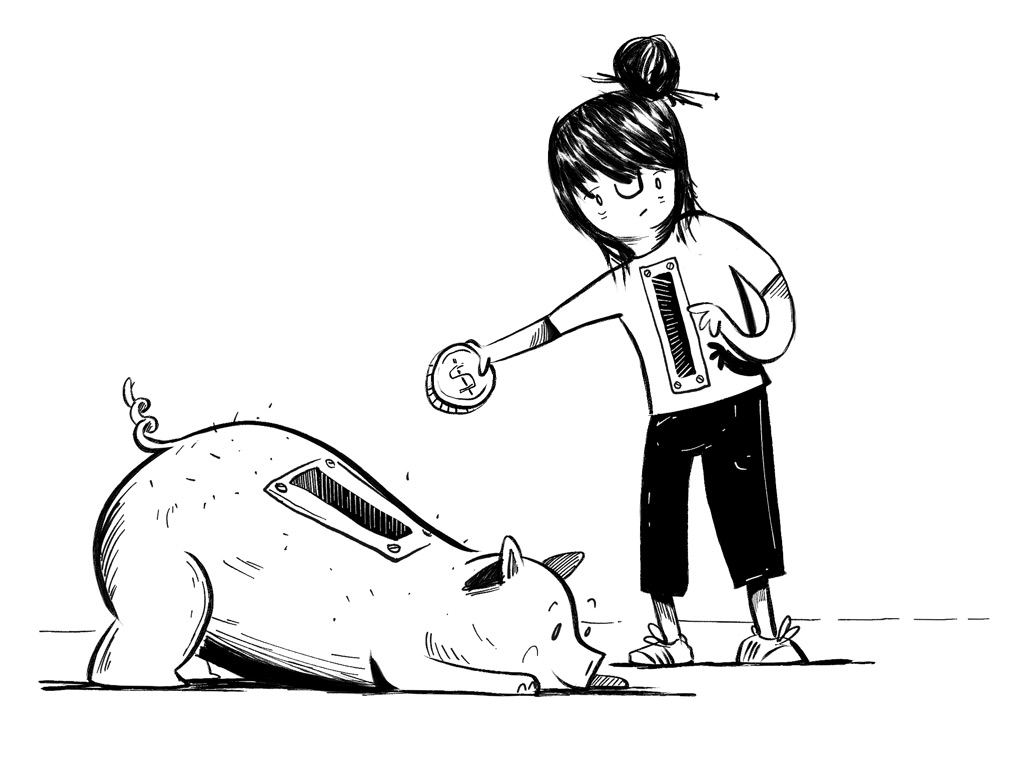There’s a difference between doing something for your livelihood and doing it for your humanhood.
Livelihood requires trading your labour for money. Illustrating for your livelihood often involves drawing for someone else’s need. Illustrations for an annual report, a corporate animation, an advertising campaign, a magazine editorial, a complement to a cook book. There’s nothing wrong with this, and it can be fun, but, in the end, it’s about providing yourself with food, shelter, and warmth.
Humanhood is something different. Humanhood is about trading your labour for something that isn’t money – a better understanding of yourself and your place in the world. Because you’re not solving someone else’s problem, almost* no one will pay you for developing your humanhood. Drawing for your humanhood is an investment in yourself.
Sometimes, the work we do for our humanhood changes what we’re able to sell for our livelihood. For example: Maybe, in private, we explore new materials, or a new way of drawing; the sort of artistic evolution that results in some new and surprising work we’ve never done before. That work can be ‘marketed and sold’ to a buyer looking for that sort of thing. But, as soon as the contract for the work is signed, even though it came from the work we did to develop humanhood, is, in the end, solving someone else’s need – that’s why they’re paying us. Same goes for the art and design of picture books, by the way.
It’d be great if the work we did to develop our humanhood was purchased by someone, consistently enough, to provide ourselves with a livelihood, but that’s almost* never the case. But, once we’re able to differentiate between the two modes and maintain an honesty with ourselves about who we’re working for at any given time, we’re able to do both, even better than before.
*almost – it’s worth noting that there are exceptions to every rule and there are cases where anything is possible.

